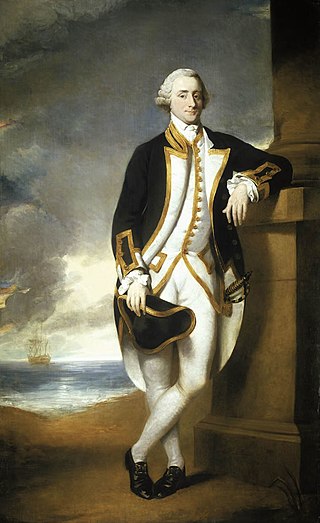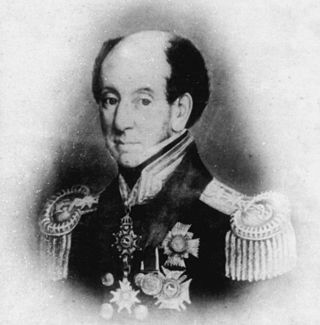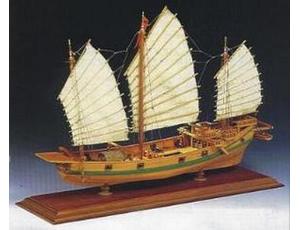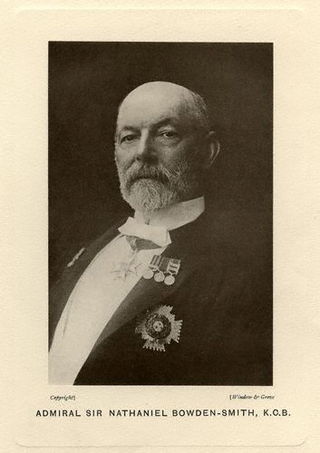
Admiral Augustus Keppel, 1st Viscount Keppel, PC was a British Royal Navy officer and politician who sat in the House of Commons from 1755 to 1782. He saw action in command of various ships, including the fourth-rate Maidstone, during the War of the Austrian Succession. He went on to serve as Commodore on the North American Station and then Commander-in-Chief, Jamaica Station during the Seven Years' War. After that he served as Senior Naval Lord and then Commander-in-Chief of the Channel Fleet.

Admiral Sir Michael Seymour, GCB was a Royal Navy officer who went on to be Commander-in-Chief, Portsmouth.

Admiral Sir Hugh Palliser, 1st Baronet was a Royal Navy officer. As captain of the 58-gun HMS Eagle he engaged and defeated the French 50-gun Duc d'Aquitain off Ushant in May 1757 during the Seven Years' War. He went on to serve as Commodore Governor of Newfoundland, then Controller of the Navy and then First Naval Lord. During the American Revolutionary War he came into a famous dispute with Augustus Keppel over his conduct as third-in-command of the Channel Fleet at the inconclusive Battle of Ushant in July 1778; the dispute led to Palliser being court-martialled, although he was subsequently acquitted. In retirement Palliser became Governor of Greenwich Hospital.

Sir James John Gordon Bremer was a British Royal Navy officer. He served in the Napoleonic Wars against France, the First Anglo-Burmese War in Burma, and the First Opium War in China.

Admiral of the Fleet The Honourable Sir Henry Keppel was a Royal Navy officer. His first command was largely spent off the coast of Spain, which was then in the midst of the First Carlist War. As commanding officer of the corvette HMS Dido on the East Indies and China Station he was deployed in operations during the First Opium War and in operations against Borneo pirates. He later served as commander of the naval brigade besieging Sebastopol during the Crimean War. After becoming second-in-command of the East Indies and China Station, he commanded the British squadron in the action with Chinese pirates at the Battle of Fatshan Creek when he sank around 100 enemy war-junks. He subsequently took part in the capture of Canton during the Second Opium War.

HMS Tamar was the name for the British Royal Navy's base in Hong Kong from 1897 to 1997. It took its name from HMS Tamar, a ship that was used as the base until replaced by buildings ashore.

The East India Squadron, or East Indies Squadron, was a squadron of American ships that existed in the nineteenth century. It focused on protecting American interests in the Far East, while the Pacific Squadron concentrated on the western coasts of the Americas and the South Pacific Ocean. Its duties included the Yangtze River Patrol in China. The East India Squadron was established in 1835 and existed until it became part of the Asiatic Squadron in 1868.

Admiral Sir Richard Vesey Hamilton was a Royal Navy officer. As a junior officer he twice volunteered to take part in missions to search for Sir John Franklin's ill-fated expedition to find the Northwest Passage. He also took part in the Battle of Fatshan Creek in June 1857 during the Second Opium War.

Admiral of the Fleet Richard James Meade, 4th Earl of Clanwilliam, styled Lord Gillford until 1879, was a Royal Navy officer. As a junior officer, he served at the Battle of Escape Creek and at the Battle of Fatshan Creek during the campaign against Chinese pirates. He also took part in the Battle of Canton, where he was severely wounded, during the Second Opium War.

HMS Cruizer was a 17-gun wooden screw sloop, the name-ship of the Cruizer class of the Royal Navy, launched at the Royal Dockyard, Deptford in 1852. The spelling of her name was formally altered to HMS Cruiser in 1857. She became a sail training vessel in 1872 and was renamed HMS Lark. She was eventually sold for breaking in 1912.

HMS Coromandel was a wooden paddle dispatch vessel of the Royal Navy. She was built for the P&O company as the passenger and cargo steamer Tartar. The Navy purchased her in 1855 and she participated in several battles in Chinese waters, including having been sunk and recovered. The Navy sold her in 1866 and she went through several changes in ownership before she was broken up in 1876.

Vice-Admiral Sir Thomas Herbert, KCB, was a British Royal Navy officer. He served in the Napoleonic Wars, War of 1812, and First Anglo-Chinese War. From 1847 to 1849, he was commodore of the South East Coast of America Station. Herbert served as Member of Parliament for Dartmouth as a Conservative from 1852 to 1857.

The Battle of Ty-ho Bay was a significant naval engagement in 1855 involving the United Kingdom and United States against Chinese pirates. The action off Tai O, Hong Kong was to rescue captured merchant vessels, held by a fleet of armed war-junks. British and American forces defeated the pirates in one of the last major battles between Chinese pirate fleets and western navies. It was also one of the first joint operations undertaken by British and American forces.

Admiral Sir Nathaniel Bowden-Smith was a Royal Navy officer who served as Commander-in-Chief, The Nore.
Admiral of the Fleet Sir Charles Gilbert John Brydone Elliot was a Royal Navy officer. As a junior officer he was involved in the bombardment of Acre during the Egyptian–Ottoman War.

SS Fatshan was a passenger ferry steamer which sank in stormy seas off Lantau Island during Typhoon Rose resulting in the loss of 88 lives.
SS Tai Hing was a river steamer built in 1927. In 1940, she was given to the Hong Kong Royal Naval Volunteer Reserve (HKRNVR) and replaced HMS Cornflower as the headquarters of the unit. She was renamed HMS Cornflower after its predecessor. To avoid confusion, the ship was sometimes referred to as HMS Cornflower II.
HMS Cornflower was an Arabis-class sloop of the Royal Navy and from 1933 the Hong Kong Naval Volunteer Force (HKNVR).

Rear Admiral Victor Alexander Montagu was an English first-class cricketer and Royal Navy officer. Born to John Montagu, 7th Earl of Sandwich, he was a godson of Queen Victoria. Montagu entered the Royal Navy as a cadet at the age of 11. He served in the Crimean War (1832–56), seeing action in the Baltic campaign and in the Black Sea. Montagu survived the shipwreck of HMS Raleigh in 1857 and afterwards served with the Naval Brigade of HMS Pearl in the Indian Mutiny, being commended by parliament for his actions. As a captain, Montagu commanded the corvette HMS Garnet from 1882. He was involved in an incident in Grenada where he threatened the editor of the Grenada People and, after being criticised in the House of Commons, retired in 1885. He was promoted to rear admiral following retirement.
















